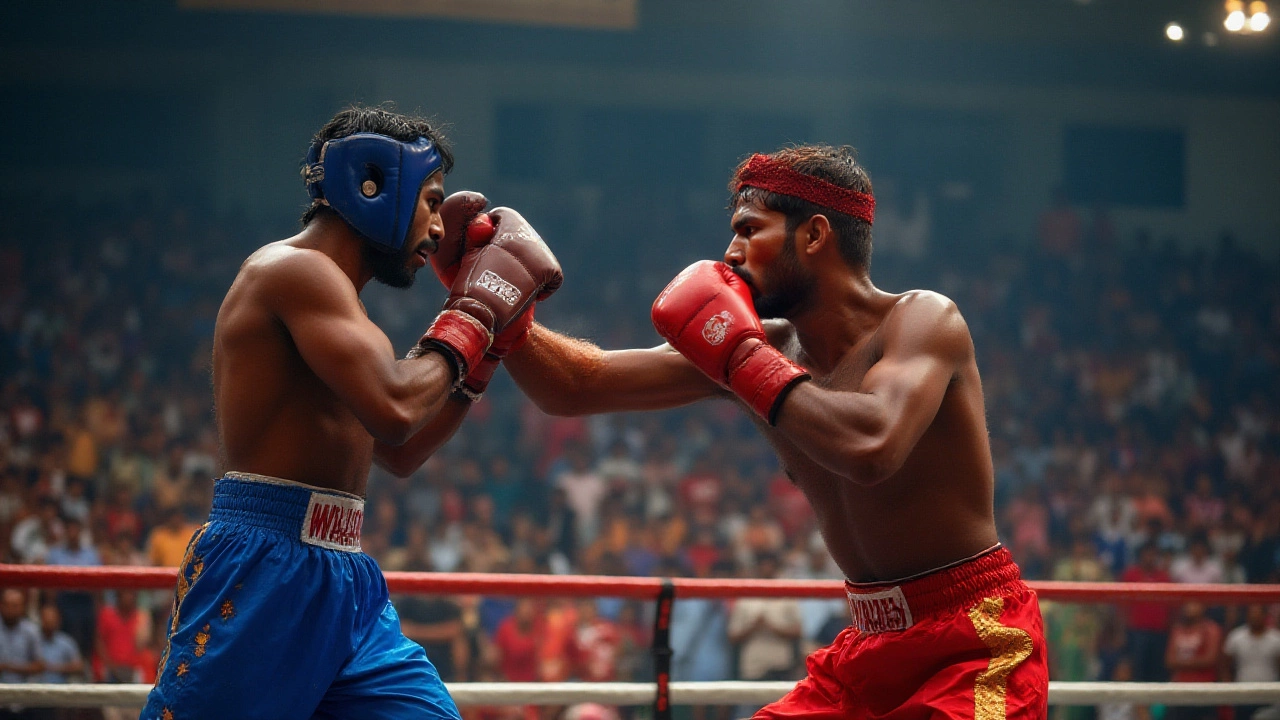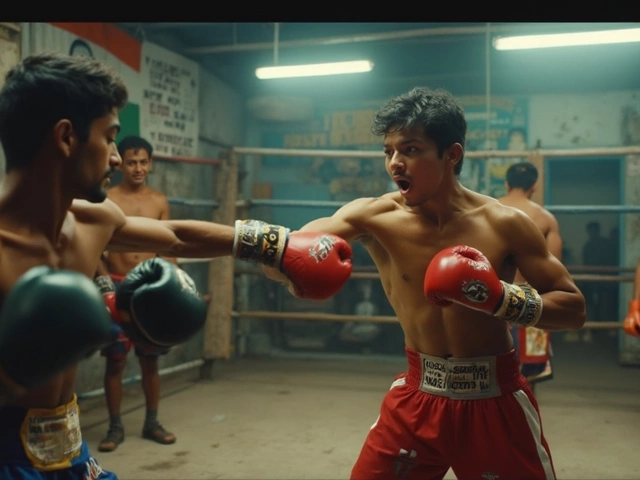
Boxing Rule of 3 Explained: Training, Strategy, and Winning Combinations
Ever wonder why some boxers seem to land hits in satisfying little bursts? Or why trainers shout numbers from ringside like it’s some secret code? Here’s something almost every seasoned fighter swears by—the rule of 3 in boxing. It’s not an official law and you won’t find it in the rulebook. Yet, you’ll see its fingerprints all over high-level fights and sparring sessions. This simple idea shapes how fighters train, punch, and outsmart their opponents, round after grueling round.
Where the Rule of 3 in Boxing Comes From
The rule of 3 isn’t something invented for dramatic movie training montages. It’s a practical tool passed down in real gyms, from jaded corner coaches to wide-eyed hopefuls. So what’s at its core? Boxers learn that throwing punches in sets of three – often called "three-punch combinations" – is a sweet spot. Throw just one punch, and it’s easy for your rival to block or dodge. Throw two, you might land a hit, but it’s still somewhat predictable. But three? That third shot often sneaks through. The pattern seems tuned into both human reaction times and the chaos of the ring.
You’ll probably hear old trainers mutter things like “Jab-cross-hook” or “Body-head-hook.” These are classic three-punch setups. There’s even data to back this up. CompuBox, the stat service for pro fights, tracks punch counts: it’s been noted that boxers who regularly use 2-3 punch combos land with higher accuracy and score more points over fights. Human brains aren’t wired to keep up with endless barrages, but three hits – just enough to be confusing—can break a tight defense. There’s also a psychological angle; fighters who learn to expect a simple one-two, get rattled by that third punch, and start to hesitate, giving away opportunities.
The "three" actually fits into several boxing truths. Coaches point out the rule of 3 applies to a lot more than just punching. In fact, it’s a teaching hack: focus on repeating something three times and it sticks. Kids drilling a jab learn better when they throw three at a time. It’s a rhythm thing—just about anyone can remember a string of three steps. This is how beginners go from awkward to smooth in the ring. You see it in defense too: block-slip-counter, or step-move-pivot. The magic of three makes things flow.
How the Rule Works in Real Boxing
The practical side of the rule of 3 in boxing comes alive during training, sparring, and pro matches. Coaches design drills around it: bag work with three-punch combos, shadow-boxing sequences, even footwork moves in three steps. Famous trainers like Freddie Roach have made fortunes hammering the point—look at Manny Pacquiao, who loves those crisp three-punch blitzes. It’s more than habit. It keeps fights fast and unpredictable.
On fight night, you’ll spot the rule in action the moment a boxer gets aggressive. Watch for it during slow-motion replays: a jab (first punch) opens the line, the cross (second) pressures the defense, and the hook (third) slips through the smallest gap. This isn’t random. The first two punches force a reaction, and the third hits where the gloves part. Even heavyweights, with lumbering arms and slower speed, trust the pattern. Fast-handed fighters like Sugar Ray Leonard or Vasiliy Lomachenko break their opponent’s rhythm with bursts of three. They’re not guessing—they’re stacking pressure so that the third shot clinches the deal.
The rule of 3 also helps with stamina management. Punches in groups of three don’t tire you out as quickly as wild 5- or 6-punch flurries. Studies on punch volume in championship fights (check the 2022 Canelo Alvarez vs. Gennady Golovkin bouts) show an average of 37-45 punches per round per fighter—most are thrown in twos and threes. That isn’t just about pacing; it’s efficient violence.
Boxing’s famous “chess game” analogy fits here too. If you always attack with one or two, you become easy to read. Add the third punch, and suddenly your rhythm breaks the pattern. It messes with your rival’s timing. There’s an old trick among pros—if you whiff on the first two in a combo, don’t stop; the third can land because your opponent already started a counter. Even in defense, stringing three moves—slip, roll, pivot—helps fighters escape trouble and reset for their own attack.
There’s real science behind this. Coaches cite reaction time studies: most people can react to one punch in about 0.2 seconds. By the third shot, reaction time slows, the brain hesitates, and that’s the window. Ghost-punchers fade after two, but the three-punch route breaks the cycle. It’s not just for power punchers or fast hitters. Even defensive maestros like Floyd Mayweather Jr. used three-move rhythms to frustrate and counter bigger men.
| Boxer | Famous Three-Punch Combination | Outcome |
|---|---|---|
| Manny Pacquiao | Jab-Straight Left-Hook | Opened up knockouts vs. Ricky Hatton & others |
| Mike Tyson | Left Hook to Body-Left Uppercut-Right Hook | Devastated taller opponents inside |
| Sugar Ray Leonard | Jab-Cross-Left Hook | Broke through Thomas Hearns' long guard |

Mastering the Rule: Training and Drills
If you’re heading to a boxing gym or just shadow-boxing in your garage, the rule of 3 can shape how you get better. It’s not magic, but it unlocks those "aha" moments—it’s the trick beginners use to build rhythm, and pros use to set traps.
Start with classic three-punch drills. Here are some go-to combos:
- Jab – Cross – Left Hook
- Jab – Uppercut – Cross
- Body Jab – Head Cross – Hook
Don’t forget defense. Practice blocking or slipping three in a row: block, recover, counter. Defenders thrive on this rule. Legendary trainer Cus D’Amato made defense into a rhythm by stringing together three slips or rolls in a row—watch old Tyson tapes and you’ll see it.
Another tip: mix up punch levels (head, body, head). It’s common for the third punch to go where your opponent isn’t looking. Look at Canelo Alvarez—he’s a master of jab to the head, hook to the body, then whipping the third punch upstairs or to the liver. The trick is to never get predictable. Trainers often say, "If your third punch always lands the same place as your first, you’re giving away the combo."
Don’t turn into a robot. Drills should build muscle memory, but fights are messy. Mix your rhythm. Sometimes deliver just two, then explode with a third after a split second. Or feint with one punch, pause, then fire a fast double to catch your partner off guard. This is how top fighters keep opponents guessing. Balance your power, too—throwing three hard punches every single combo will leave you gassed by the third round. Change speed, change force, and keep focused on technique.
For southpaws, the rule of 3 is gold. That off-angle left throws combinations that right-handers aren’t used to. Consider practicing:
- Lead Right Hook – Straight Left – Right Body Hook
- Jab – Jab – Cross
Even at the highest levels, champs still do basic three-punch bag rounds during warmups. Gennadiy Golovkin, when prepping for title defenses, is famous for crisp three-punch flurries that set up his trademark hooks. If it works for the best, it’s not beneath anyone else.
The Rule of 3 Beyond Punches: Making It Part of Your Game
The best thing about this “rule” is its flexibility. It started with punching, but it crawled its way into every corner of boxing. Offensively, you’re already covered—three shots, maximum surprise. On defense, it’s just as sharp. Try this in sparring: slip, roll under, then step out; that’s three movements instead of freezing after a single dodge.
This rhythm shapes footwork, too. Pros use "step, step, pivot" instead of clumsy, one-step shifts. Watch any fight with Oleksandr Usyk and you’ll spot neat little trios—two sidesteps and a pivot, always ending in an angle that sets up a new attack. It’s not random foot shuffling. Every third move puts him in the driver’s seat. That’s what separates world-class from gym-warrior.
There’s also a mental edge. Fighters often use the rule of 3 as a way to reset their momentum. After a slugfest or when nerves make you freeze, firing a three-punch combo almost flips a switch—suddenly you’re playing chess, not checkers. It stacks pressure, turns the tide, and messes with an opponent’s focus.
Not every fighter should be chained to rules, but the “three” idea is a time-tested hack. It’s not just about offense or defense—it’s about sending constant, creative questions to your opponent. Next time you watch a pro card, listen carefully: the instructions from the corner will follow the same beat—three jabs, three escapes, three pivots. It sticks because, put simply, it just works.
Mix it up as you get better. Advanced boxers sometimes fake with three, then smash in a sneaky fourth punch. Some will use three light shots to hide a powerful finisher, like a lazy jab-jab-cross to set up a lights-out uppercut. But the rule of 3 in boxing is the foundation they build on. Even when the combinations get wild, three is the heart of the pattern.
There’s a big trend in fitness boxing and cardio gyms, too. Trainers use three-punch sequences because they’re easy to remember, hard enough to challenge, and useful for burning calories. No matter if you’re fighting for titles or just jabbing at a heavy bag for stress relief, stringing three together helps build sharpness, speed, and stamina. That’s why the rule keeps surviving, year after year, from the time of Jack Dempsey to the latest Olympic squads.







